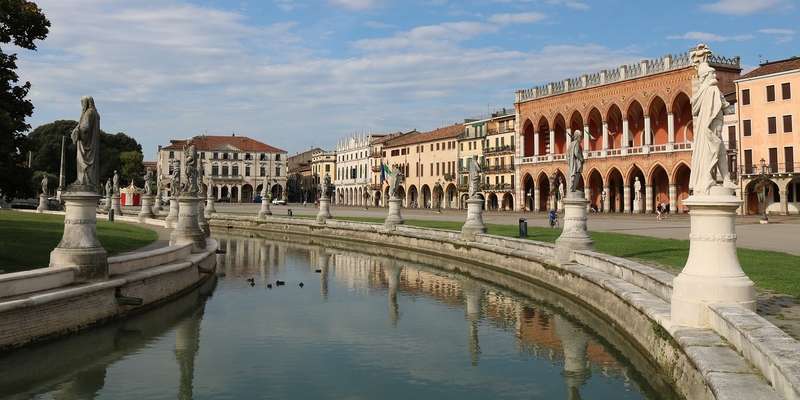- Home
- Useful Tips
- Padua's historic textile and...
For textile lovers visiting Padua, finding authentic, high-quality fabrics without falling into tourist traps is a real challenge. Over 60% of visitors report leaving Italy with counterfeit or overpriced textiles, according to recent artisan surveys. The historic center's winding alleys hide centuries-old botteghe, but most travelers never discover them, settling instead for mass-produced souvenirs. This disconnect costs travelers both money and the chance to own truly exceptional Venetian silks or Renaissance-patterned linens. Worse still, language barriers and unclear pricing leave many hesitant to explore Padua's rich textile heritage at all. The frustration of returning home with inferior fabrics—or worse, empty-handed—overshadows what should be a highlight of any Veneto itinerary.


How to spot authentic Paduan textiles versus imported fakes
Genuine Padua textiles carry distinct hallmarks often missed by untrained eyes. Local artisans typically use natural dyes that create softer color gradients compared to the harsh tones of synthetic imports. Run your fingers across the fabric—authentic Venetian silk should whisper against skin with a barely-there weight, while counterfeit versions feel stiff or plasticky. Check for the 'Artigianato Veneto' certification seal, a government-backed guarantee of regional craftsmanship. Don't be fooled by 'Made in Italy' labels alone; these can legally apply to fabrics merely finished (not woven) domestically. For linen, examine the weave under light: true Renaissance-style jacquards show slight irregularities that prove handloom work. Shop owners preserving traditional methods will proudly explain their production processes—if they evade questions about origins, consider it a red flag.
Three family-run botteghe that still weave fabrics onsite
Behind unassuming facades near Piazza delle Erbe, generations-old workshops keep Padua's textile legacy alive. Tessitura Luisa has operated since 1923, where fourth-generation weavers create exquisite damasks using the same wooden looms as their great-grandparents. Their specialty is reproducing medieval patterns from Padua's Scrovegni Chapel frescoes. For silk lovers, Seteria Bianchi offers a mesmerizing behind-the-scenes view of hand-reeling cocoons into lustrous threads—a vanishing practice in modern Italy. Their scarves incorporate gold leaf fragments in a technique dating to the Republic of Venice. Meanwhile, Lanificio Piroetta specializes in heavyweight wools perfect for winter coats, with natural indigo vats that dye fabric in shades unchanged since the 1500s. These artisans welcome visitors who appreciate slow craftsmanship, often allowing you to touch works-in-progress that will never appear in chain stores.
When to visit for secret seasonal discounts and rare finds
Padua's textile shops follow a cyclical calendar unknown to most tourists. January brings 'saldi' (sales) on overstocked autumn wools, while July offers surprising deals on spring silks as shops clear inventory. For one-of-a-kind pieces, time your visit with the Festa della Tessitura in late September, when artisans sell experimental designs and slight 'imperfections' at steep discounts. Early mornings midweek (Tuesday-Thursday) see fewer crowds, allowing for unhurried browsing and potential price negotiations—especially if you're buying multiple meters. Avoid Saturdays when Milanese day-trippers drive up prices. Rainy days often yield the best finds, as shops unveil limited-edition water-resistant linens traditionally woven for Venetian sailors. Those visiting during February's Carnevale might stumble upon exquisite costume fabrics that shops stock exclusively for masquerade attendees.
Navigating custom orders and international shipping like a local
Many Padua textile houses offer bespoke services travelers rarely discover. For a truly unique souvenir, several shops will weave fabrics incorporating your chosen colors or monograms—a process taking 4-6 weeks that costs surprisingly less than ready-made luxury goods. Don't let language barriers deter you; shops like Drapperia Dante keep English-speaking staff specifically to assist foreign clients. Shipping bulky purchases home needn't be stressful either. Reputable stores partner with specialized couriers experienced in handling delicate textiles, with VAT-free paperwork for non-EU residents. Some even include complimentary storage if you wish to continue traveling before shipping. For smaller items, the historic post office near Palazzo Bo offers affordable 'piego di libri' book-rate shipping that surprisingly applies to folded fabrics under 2kg. Always request 'fattura' (official receipt) to simplify potential customs declarations.



